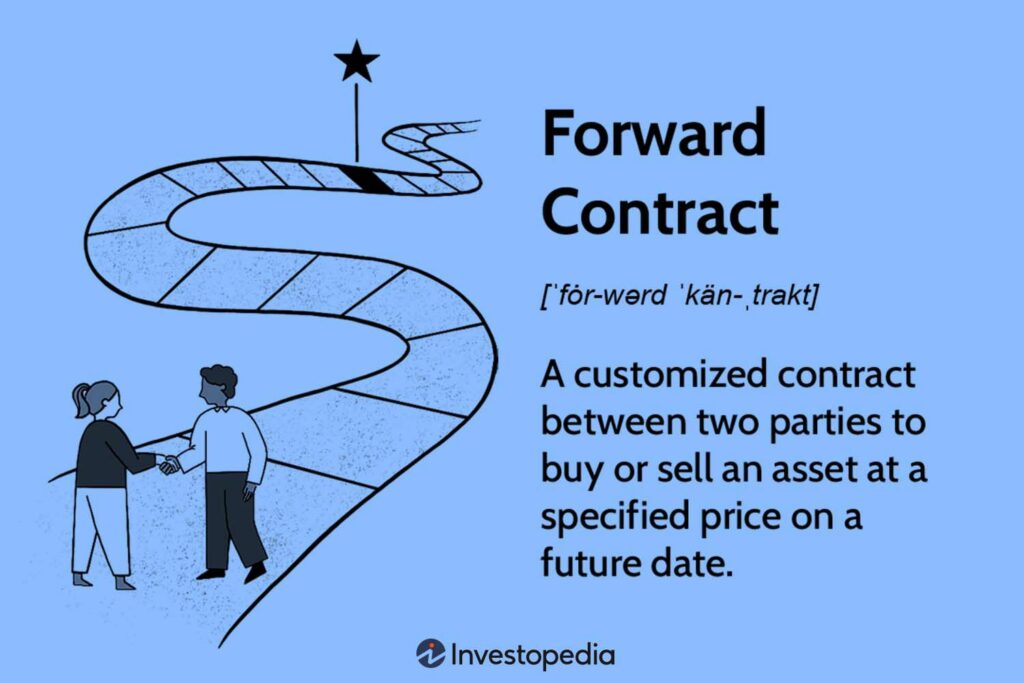Mastering Financial Strategy: A Comprehensive Guide on Accounting and Negotiating Forward Contracts

Introduction
In the complex and dynamic world of international finance, businesses often find themselves exposed to various risks due to fluctuating exchange rates. Forward contracts emerge as a strategic tool to manage these risks effectively. This comprehensive guide aims to provide an in-depth understanding of how to account for and negotiate forward contracts, empowering businesses to navigate the intricacies of the foreign exchange market with confidence.
Section 1: Understanding Forward Contracts
1.1 What are Forward Contracts?
A forward contract is a financial agreement between two parties to exchange a specified amount of currency at a predetermined exchange rate on a future date. These contracts serve as a risk management tool, allowing businesses to hedge against potential losses arising from currency volatility.
1.2 Why Use Forward Contracts?
Businesses engage in forward contracts to mitigate the risks associated with currency fluctuations. By fixing the exchange rate in advance, companies can plan and budget more effectively, ensuring stability in their financial forecasts. Forward contracts are particularly valuable for businesses engaged in international trade, where currency movements can significantly impact profitability.
1.3 Key Features of Forward Contracts
- Agreed-upon Terms: The parties agree on the amount, currency, exchange rate, and maturity date of the contract.
- Non-Standardized: Forward contracts are customizable and not traded on organized exchanges, allowing for flexibility in contract terms.
- Obligatory Nature: Both parties are obligated to fulfill the contract, irrespective of the prevailing market exchange rate at the contract’s maturity.
Section 2: Accounting for Forward Contracts
2.1 Mark-to-Market Accounting
Mark-to-market (MTM) accounting is a common method used to account for the value of forward contracts on financial statements. Under MTM, the contract’s value is adjusted to reflect its current market value at each reporting period. This provides transparency and accuracy in financial reporting, as the gain or loss on the forward contract is recognized in the income statement.
2.2 Recognizing Gains and Losses
The gains or losses on forward contracts arise from changes in the market value of the contract due to currency rate fluctuations. These gains or losses are typically classified as unrealized until the contract’s maturity. At maturity, the unrealized gains or losses become realized and are recorded in the income statement.
2.3 Hedge Accounting
For businesses using forward contracts as hedging instruments, hedge accounting provides a way to align accounting treatment with the risk management objective. Hedge accounting allows companies to designate forward contracts as cash flow hedges, fair value hedges, or hedges of net investments in foreign operations, depending on the nature of the exposure being hedged.
Section 3: Negotiating Forward Contracts
3.1 Identifying Exposure and Objectives
Before negotiating a forward contract, businesses must identify their exposure to currency risk. This involves assessing the nature and magnitude of foreign currency transactions within a specified time frame. Understanding exposure helps determine the appropriate volume and terms for the forward contract.
3.2 Selecting a Counterparty
Choosing the right counterparty is crucial when negotiating forward contracts. Businesses should assess the financial stability, reputation, and reliability of potential counterparties. Additionally, working with established financial institutions or banks can provide a level of security and confidence in the execution of the contract.
3.3 Determining Contract Terms
Negotiating the terms of a forward contract involves agreeing on the currency pair, contract amount, exchange rate, and maturity date. These terms should align with the business’s risk management objectives and financial strategy. Clear communication and a comprehensive understanding of market conditions are essential during the negotiation process.
3.4 Monitoring Market Conditions
Currency markets are influenced by a myriad of factors, including economic indicators, geopolitical events, and market sentiment. Businesses engaged in negotiating forward contracts should continuously monitor these conditions to make informed decisions and potentially adjust their hedging strategies based on changing market dynamics.
3.5 Evaluating Costs and Benefits
While forward contracts provide a valuable hedging mechanism, businesses must carefully evaluate the costs associated with entering into such agreements. Factors such as bid-ask spreads, transaction fees, and opportunity costs should be considered. Comparing the potential benefits of hedging against the associated costs helps in making informed decisions.
Section 4: Risk Management Strategies
4.1 Diversification
Diversifying currency exposure across various markets and currencies can reduce risk. By engaging in transactions denominated in different currencies, businesses can mitigate the impact of adverse exchange rate movements on their overall financial position.
4.2 Use of Options
In addition to forward contracts, businesses can explore the use of currency options to manage risk. Options provide flexibility by offering the right (but not the obligation) to buy or sell currencies at a predetermined rate. This strategy allows businesses to benefit from favorable market movements while limiting downside risk.
4.3 Regular Review and Adjustment
The dynamic nature of currency markets necessitates a proactive approach to risk management. Regularly reviewing and adjusting hedging strategies based on changes in market conditions, business objectives, and financial performance is crucial for maintaining an effective risk management framework.
Conclusion
Mastering the accounting and negotiation of forward contracts is integral to a robust risk management strategy for businesses engaged in international trade. By understanding the intricacies of forward contracts, implementing effective accounting practices, and adopting sound negotiation strategies, businesses can navigate the complexities of the foreign exchange market with confidence. As the global economy continues to evolve, the ability to manage currency risk effectively becomes a cornerstone of financial stability and success in the international business landscape.







